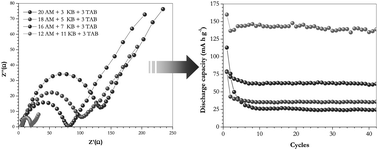Influence of carbon towards improved lithium storage properties of Li2MnSiO4 cathodes
Abstract
Superior lithium storage in Li2MnSiO4 cathodes was observed by altering carbon content during the formulation of electrodes. Initially, Li2MnSiO4 was prepared by a conventional solid-state reaction at 900 °C under Ar flow with a fixed amount of


 Please wait while we load your content...
Please wait while we load your content...